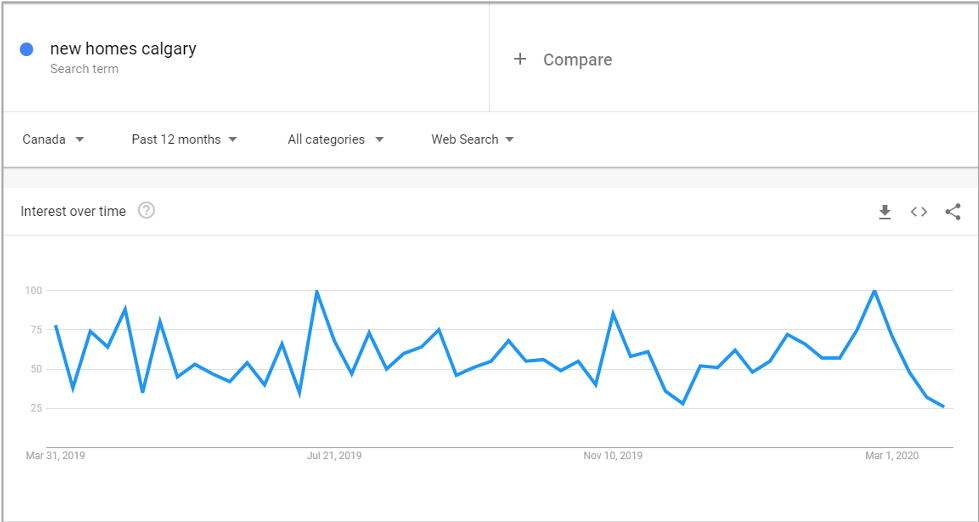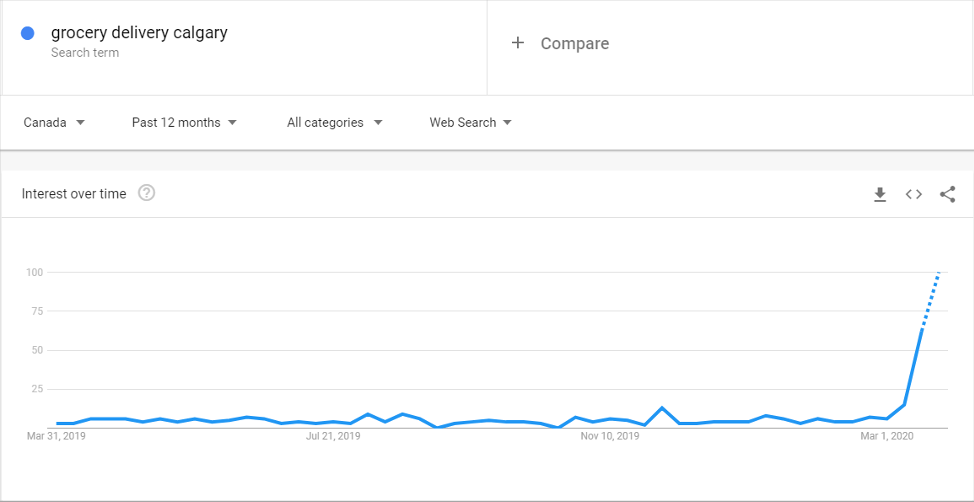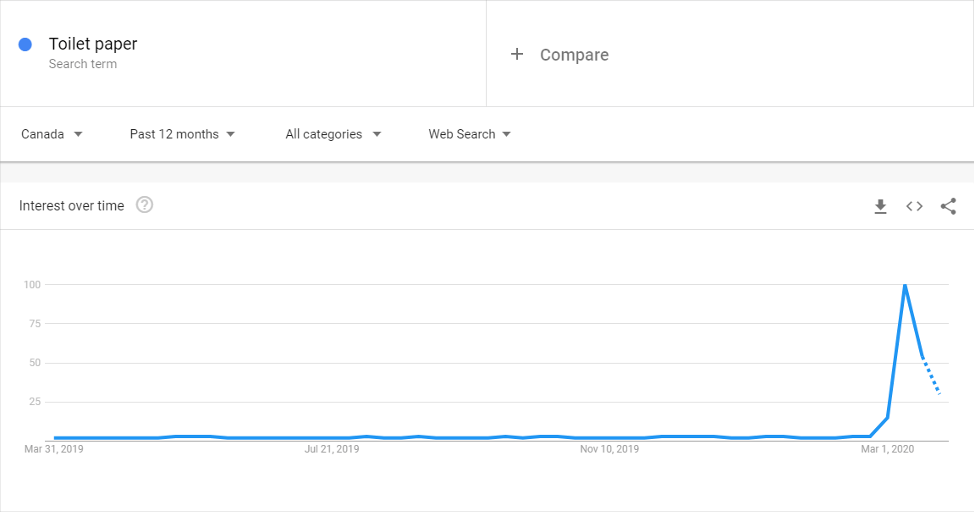COVID Strategies for the Socially Isolated Marketer
As we all navigate this new, unprecedented landscape we want our friends and partners to stay informed and aware of the many implications this global issue has from a marketing and media perspective. Whether you’re pausing your campaigns and waiting for this to pass, or soldiering through the current situation, we want to make sure you’re leveraging all the tools at your disposal to make good marketing decisions.

Tread Lightly
We marketers are trained to capitalize on market forces and trends, but we are in uncharted waters here, so the rules are different.
If you are leveraging both inbound and outbound strategies, it would be worthwhile evaluating your approach on each. Depending on your industry, you may decide that an inbound strategy is safer for your brand than an outbound strategy right now. However, if people are still looking for your products or services, it may make sense to continue to serve them paid search ads. Regardless of which way you go, it’s important to evaluate the risk of negative consumer perception across any of your marketing right now so that you’re not risking damage to your brand. As always, it’s important to understand your audience and meet them where they are.
This is a sensitive situation and emotions are high, so now is a good time to review your messaging strategy as well. Are you being informative and helpful, or could your message be interpreted as opportunistic? This perception could stick with people after the dust settles, so review your messaging to make sure it can’t be misconstrued; and if necessary, shift your message to be more supportive and educational.
Stay on Top of It
If you’re working with an agency, we would encourage you to ask them how they are monitoring your campaign performance during the COVID crisis. One big advantage of having a dedicated Analytics team on every client account here at Vovia is that we are keeping close tabs on changes in clickthrough rate, conversion volume, and conversion rate (on consistent impressions and spend) to ensure that campaigns are still efficient and effective for our clients. When key metrics start to drop or decline, our team flags it internally, and then we have a conversation with our clients to let them know what we are seeing. We can then collaborate on the best next steps together to reach a solution. We understand that we are in this together and feel a duty to ensure that our clients are getting the most out of their marketing investment, regardless of the current situation.
The Socially Isolated Marketer’s Toolbelt
If you are running your own campaigns, we wanted to provide some tips and tricks to help you stay on top of changes in user behaviour. Here are some tools and recommendations to help you in this endeavor:
Google Trends – This is a fantastic tool for staying on top of specific search terms and we lean to this one in particular because the trends are nearly real time (about a 4 hour delay). This not only shows differences in search terms, but the velocity of changes in user behaviour. Google has also updated Google Trends with a new dedicated section for COVID, including top questions asked in the US over the past week and information on which products are being searched and how demand for other categories is changing over time. This is US-specific, but still gives us an idea on the recent search behaviour of users around the COVID situation.
Filtering for Canada and thinking about a few of our clients, here are a couple of examples of the Covid-19 effects we are already seeing in Google Search:
“New Homes Calgary” – Declining Search Volume

“Grocery Delivery Calgary” – Increasing Search Volume

And in case you were wondering …

You can leverage this trend information in a variety of ways. For example, if search volumes have been cut in half, you could consider decreasing your budget rather than pausing altogether because there is still demand. If search volumes are increasing (like in the case of grocery delivery), you may find there is opportunity to amp up that pull strategy we talked about above.
Search Query and Placement Reports – This one may seem simple enough, but it’s important to note changes in search behaviour and how people are searching for your brand and product in this new age. Are previously low volume keywords skyrocketing? Are you spending on question-related search queries that are not driving conversions? If people are spending more time researching, does it make sense to still be there in the search results to maintain brand presence? Ongoing analysis of keywords in relation to your KPIs and business objectives is always recommended but becomes even more critical in times of crisis or a shifting ecosystem. Ensure you are constantly scanning so you can bid on the terms that are still fruitful and pause those that are not performing.
Competitive Analysis – What are your competitors doing right now? If key competitors are in market (and doing it right), perhaps you should be too? Conversely, if your competitors are out of market, an opportunity may present itself but, again, make sure to review your messaging to avoid negative perception.
Keyword Planner – While this at first would seem like a good choice, the Google Ads Keyword Planner is actually backward looking, so you won’t get current trends out of this tool. I would stick to the previous tools and tactics mentioned.
What’s Next?
Take it slow. Be sensitive, be calculated, and ensure your decisions are data-driven and research backed.
While regular product and service marketing might not make sense depending on your industry, there could be amazing branding opportunities if you can pivot your organization to support those in need. Dyson and Tesla are making ventilators right now. More locally, Annex Ale Project in Calgary and Hansen Distillery in Edmonton have converted a portion of their production into making hand sanitizer and disinfectant. These are amazing revelations and demonstrate an incredibly high level of social responsibility. This will stick with people.
Even for those not doing anything specific, but who are offering essential services, it’s a good idea to evaluate and consider modifying your media plan around changing consumer habits due to folks being isolated. There is a tonne of opportunity here, we might just need to think outside the box.
If conventional tactics don’t make sense, perhaps this is a good time to revisit your SEO or Content Marketing strategy? Even if you are not launching content right now, why not take advantage of the downtime to develop it? There is still plenty to do for the socially isolated marketer, we just have to be nimble enough to pivot our focus for the time being.
These are strange and unprecedented times, but that does not mean that we’re powerless. You’re not alone in this and all industries are feeling the effects. It is important, perhaps more now than ever, to align yourself with the right partners – ones who will help you get the right message to the right people at the right time while also identifying market forces and changes in behavior, ensuring you remain efficient and effective.
Keep it locked right here for a follow-up post on COVID-19 marketing trends where we’ll dive deeper into the data and results we are seeing during these strange times. Stay on top of the trends and you will stay ahead of the pack!
Drop us some questions or comments below! I’d love to hear from you and am super interested to hear how you’re doing. Be kind. Be patient. Be good to each other out there!